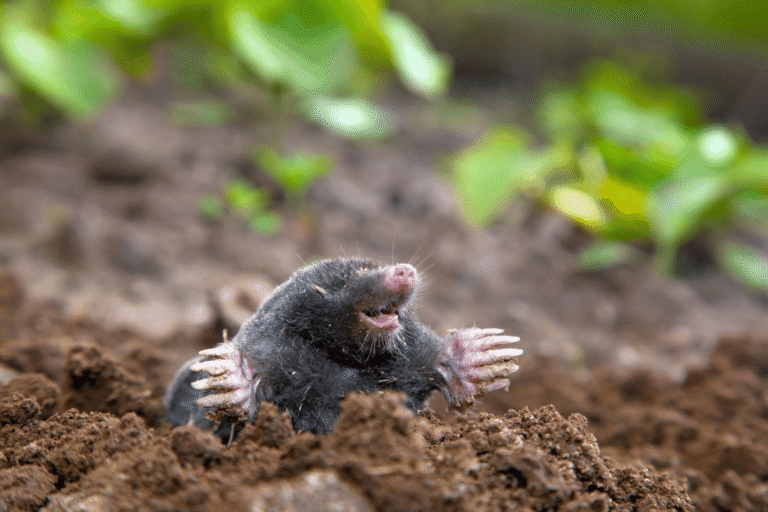How To Use Vinegar To Get Rid of Armadillos In Your Yard

If your yard is starting to look like a minefield of small holes and tunnels, you might be dealing with an armadillo problem.
These nocturnal creatures may look harmless, but their digging habits can cause serious damage to lawns, gardens, and even home foundations.
While calling in pest control is one option, many homeowners prefer natural, safe, and affordable methods to keep armadillos away, like vinegar.
In this guide, we’ll walk you through how vinegar works as an armadillo repellent and the 10 steps you can take to use it effectively.

1. Why Armadillos Are a Problem
Armadillos dig for food—mainly insects and grubs—using their strong claws and excellent sense of smell. Unfortunately, that means they often:
- Uproot plants
- Destroy garden beds
- Dig tunnels near homes
- Damage lawns and landscaping
Left unchecked, their burrows can also weaken structures and create safety hazards in your yard.
2. How Vinegar Works as a Natural Repellent
Vinegar is not poisonous or harmful to animals, but it has a strong, sour smell that overwhelms an armadillo’s highly sensitive nose.
Since they rely on smell to find food, vinegar disrupts their navigation and creates an unpleasant environment.
The scent signals that the area is not safe or suitable for digging, encouraging them to move elsewhere.
3. Choosing the Right Vinegar
When it comes to repelling armadillos, white distilled vinegar is the best option. It has the strongest scent, is widely available, and is very inexpensive.
You can also use apple cider vinegar, which has a slightly sweeter but still potent smell, though it may be a bit less effective. It’s best to avoid using balsamic or flavored vinegars.
Not only are they more expensive, but their sugary content could attract other pests like ants or flies, which defeats the purpose.
4. How To Make a Vinegar Spray Solution
To make a vinegar-based repellent spray, mix equal parts of white vinegar and water in a spray bottle or garden sprayer.
For an extra kick, you can add a few drops of essential oils like peppermint, eucalyptus, or clove—all scents that many pests, including armadillos, dislike.
Shake the solution well before each use. This spray is easy to apply and works well in covering large outdoor areas where armadillos might be active.
5. Spray Vinegar Around Key Areas
Look for signs of armadillo activity, such as fresh holes, disturbed mulch, or open burrows. Spray the vinegar solution generously around:
- Garden beds
- Burrow entrances
- Compost piles
- Fence lines
- Patios and decks
Make sure to reapply every 3–4 days, or after it rains, as the scent fades over time.
6. Use Vinegar-Soaked Cotton Balls or Rags
For a more concentrated effect, soak cotton balls or cloth rags in undiluted white vinegar and place them directly near burrow entrances or high-traffic areas. This helps maintain a strong, localized scent that lasts longer than a spray.
Be sure to replace the soaked items every few days for the best results. Just avoid placing them directly on plant leaves, as the acidity in vinegar can damage them.
7. Keep Your Plants and Lawn Safe
While vinegar is a powerful repellent, it can also harm plants if used carelessly. Spraying too close to leaves or delicate flowers may cause discoloration or leaf burn. To protect your vegetation:
- Use the spray only on soil or hard surfaces
- Place soaked rags or cotton balls near (not on) garden beds
- Avoid oversaturating grassy areas
A little caution goes a long way in balancing pest control and plant health.
8. Combine with Other Natural Deterrents
Vinegar works best as part of a broader strategy. Consider combining it with:
- Motion-activated sprinklers to scare armadillos at night
- Bright outdoor lights to disrupt their nighttime activity
- Fencing buried 12–18 inches underground to prevent burrowing
- Removing food sources like open trash cans, pet food, or excess mulch
Using multiple deterrents increases your chances of success and discourages armadillos from returning.
9. Be Consistent and Patient
Natural repellents like vinegar take time and consistency. Armadillos are creatures of habit, and it might take several days or even a couple of weeks before they fully abandon the area.
Stick to a routine of:
- Reapplying the spray every few days
- Refreshing soaked items regularly
- Monitoring your yard for new activity
With persistence, most armadillos will relocate on their own.
10. When to Call a Professional
If you’ve tried vinegar and other DIY methods without success, and the armadillo problem continues, it may be time to call in a professional.
Wildlife control experts can safely trap and relocate the animals, as well as help you seal off burrows and entry points for long-term prevention.
That said, many homeowners find that vinegar alone, when used properly and consistently, does the trick for mild to moderate armadillo invasions.
Final Thoughts
Using vinegar to get rid of armadillos is a simple, natural, and humane solution that can save your lawn without putting animals or the environment at risk.
While it may not be an instant fix, it’s a safe and cost-effective method worth trying before resorting to traps or chemicals.
With the right approach, you can reclaim your yard—and keep it armadillo-free.






